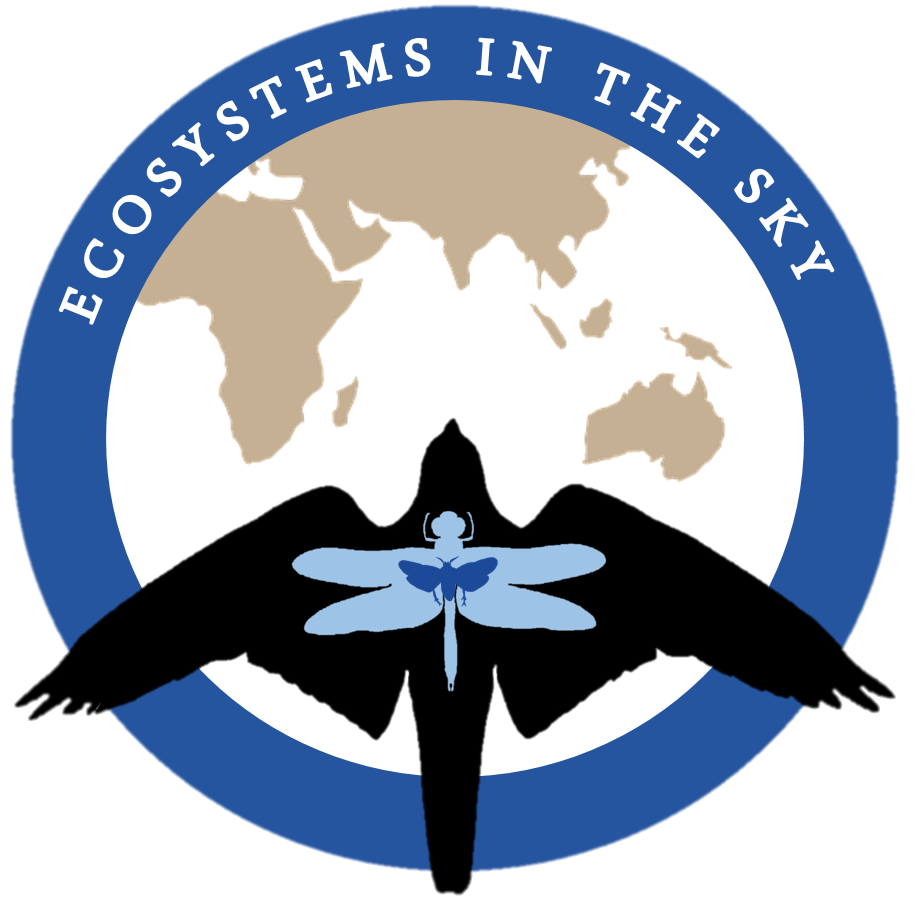Bonaire Birds
Bonaire is a small island situated on the north coast of Venezuela, it is part of a group of islands referred to as the ABC islands: Aruba, Curaçao and Bonaire. All three ABC islands are autonomous parts of the Netherlands and are called the Dutch Leward Antilles.
Between the 28th of November and 14th of December, me and an amazing team of five researchers went to Bonaire to study anti-predatory behaviour in Caribbean reef squid (more on that in later blog posts). As I have a keen interest in birds and dragonflies, as spent as much none-squid time as possible looking for any of these flying species…
There are about 244 bird species recorded on Bonaire, and since many of them are migrants that only visit the island briefly as they are flying south, or winter on the island, the best time to go bird watching is in the winter.
As the main purpose of my trip to Bonaire was to conduct research on Caribbean reef squids, I didn’t have that much time over to go bird watching. However, I always had my bird book and binos with me, so I managed to see quite a few amazing birds (and dragonflies, but more on that later).
My absolute favourite species to see were the two hummingbirds, and I caught the male blue-tailed emerald on video:
https://twitter.com/JSUHedlund/status/1202187000998174720?s=20
I did not however managed to get any good photos of the hummingbirds, but this is what the splendid males of the two species look like when someone with a lot of patience and a good camera snap a pic:
Blue-tailed emerald male, Photo: Francesco Veronesi.
Ruby-topaz Hummingbird male, Photo: Ysmad
Other great and beautiful species I saw were the Venezuela troupial, the magnificant frigatebird, bananaquit, yellow-shouldered Amazon parrot and American flamingo.
Carib grackel, Photo: Johanna Hedlund
Golden warbler, Photo: Johanna Hedlund
Yellow-shouldered Amazon parrot, Photo: Johanna Hedlund
American flamingo at Goto Meer, Photo: Johanna Hedlund
Venezuelan troupial, Photo: Johanna Hedlund
Bananaquits, Photo: Johanna Hedlund
This is the complete list of the 35 bird species I saw on Bonaire (English name, Scientific name and Swedish name):
American Flamingo Phoenicopterus ruber, karibisk flamingo
Scaly-naped Pigeon Patagioenas squamosar, ödnackad duva
Bare-eyed Pigeon Patagioenas corensis, nakenögd duva
Common Ground Dove Columbina passerina, nordlig markduva
White-tipped Dove Leptotila verreauxi, ljuspannad duva
Eared Dove Zenaida auriculata, öronduva
Ruby-topaz Hummingbird Chrysolampis mosquitus, topaskolibri
Blue-tailed Emerald Chlorostilbon mellisugus, blåstjärtad smaragd
Semipalmated Plover Charadrius semipalmatus, flikstrandpipare
Ruddy Turnstone Arenaria interpres, roskarl
Laughing Gull Leucophaeus atricilla, sotvingad mås
Royal Tern Thalasseus maximus, kungstärna
Magnificent Frigatebird Fregata magnificens, praktfregattfågel
Brown Pelican Pelecanus occidentalis, brun pelikan
Great Blue Heron Ardea herodias, amerikansk gråhäger
Great Egret Ardea alba, ägretthäger
Reddish Egret Egretta rufescens, rosthäger
Green Heron Butorides virescens, grönryggig häger
Osprey Pandion haliaetus, fiskgjuse
Crested Caracara Caracara cheriway, nordlig tofskarakara
Peregrine Falcon Falco peregrinus, pilgrimsfalk
Yellow-shouldered Amazon parrot Amazona barbadensis, gulskuldrad amazon
Brown-throated Parakeet Eupsittula pertinax, brunstrupig parakit
Brown-crested Flycatcher Myiarchus tyrannulus, brunhättad topptyrann
Gray Kingbird Tyrannus dominicensis, grå kungstyrann
Pearly-eyed Thrasher Margarops fuscatus, vitögd härmtrast
Tropical Mockingbird Mimus gilvus, tropisk härmtrast
House Sparrow Passer domesticus, gråsparv
Venezuelan Troupial Icterus icterus, venezuelatrupial
Yellow Oriole Icterus nigrogularis, gultrupial
Yellow/ Golden Warbler Setophaga petechia, gul skogssångare
Carib Grackle Quiscalus lugubris, karibbåtstjärt
Saffron Finch Sicalis flaveola, saffransgulfink
Black-faced Grassquit Melanospiza bicolor, skiffergräsfink
Bananaquit Coereba flaveola, banansmyg
CONSERVATION ON BONAIRE
Bonaire has about 20 000 residents, of which most live in the coastal capitol of Kralendijk or in inland Ricon. Aruba, which is the smallest of the ABC islands, has about 116 000 residents, and is heavily developed.
There is a push to build more and attract more businesses to Bonaire, to boost the economy and create work, ie to become more like Aruba. However, 2-3 cruise ships already lay anchor at Bonaire daily, and there is many challenges connected with the influx of temporary visitors and hurried development.
Recently, the number of bleached corals have decreased in the reefs surrounding Bonaire, possibly as a result of sewage treatment having been improved on the island. Such positive trends must not be reversed. On Aruba, bird species as the pearly-eyed thrasher and yellow-shouldered Amazon parrot have disappeared, presumably because of a lack of suitable habitat. On Bonaire these birds still breed, and the endangered yellow-shouldered Amazon parrot has even increased in numbers!
The protected areas of Washington-Slagbaai National Park and Bonaire National Marine Park, along with the work of NGOs such as Echo Bonaire and STINAPA are immensely important to protect, conserve and educate on the natural, local fauna and flora of Bonaire - perhaps the last stronghold for many species of the ABC islands.
Washington-Slagbaai National Park, Photo: Johanna Hedlund
EcHo Bonaire
“Echo’s goal is to ensure a stable and growing population of the Yellow-shouldered Amazon Parrot. We hope to achieve this by:
Reducing the poaching of chicks for the local and international pet trade.
Restoring the dry-forest habitat that the parrots call home.
Reducing habitat degradation by non-native species such as donkeys, goats, and pigs.”
STINAPA and WASHINGTON-SLAGBAAI national park
“Stichting Nationale Parken Bonaire (STINAPA Bonaire) is a non-governmental, not for profit foundation commissioned by the island government to manage the two protected areas of Bonaire: the Bonaire National Marine Park (BNMP) and the Washington Slagbaai National Park (WSNP).”
“Washington Slagbaai National Park is a 5,643 hectares nature sanctuary located in the northwest part of the island. It was the first nature sanctuary of the Netherlands Antilles and was established in 1969. It is a safe habitat for the terrestrial endemic and endangered species of Bonaire.”












